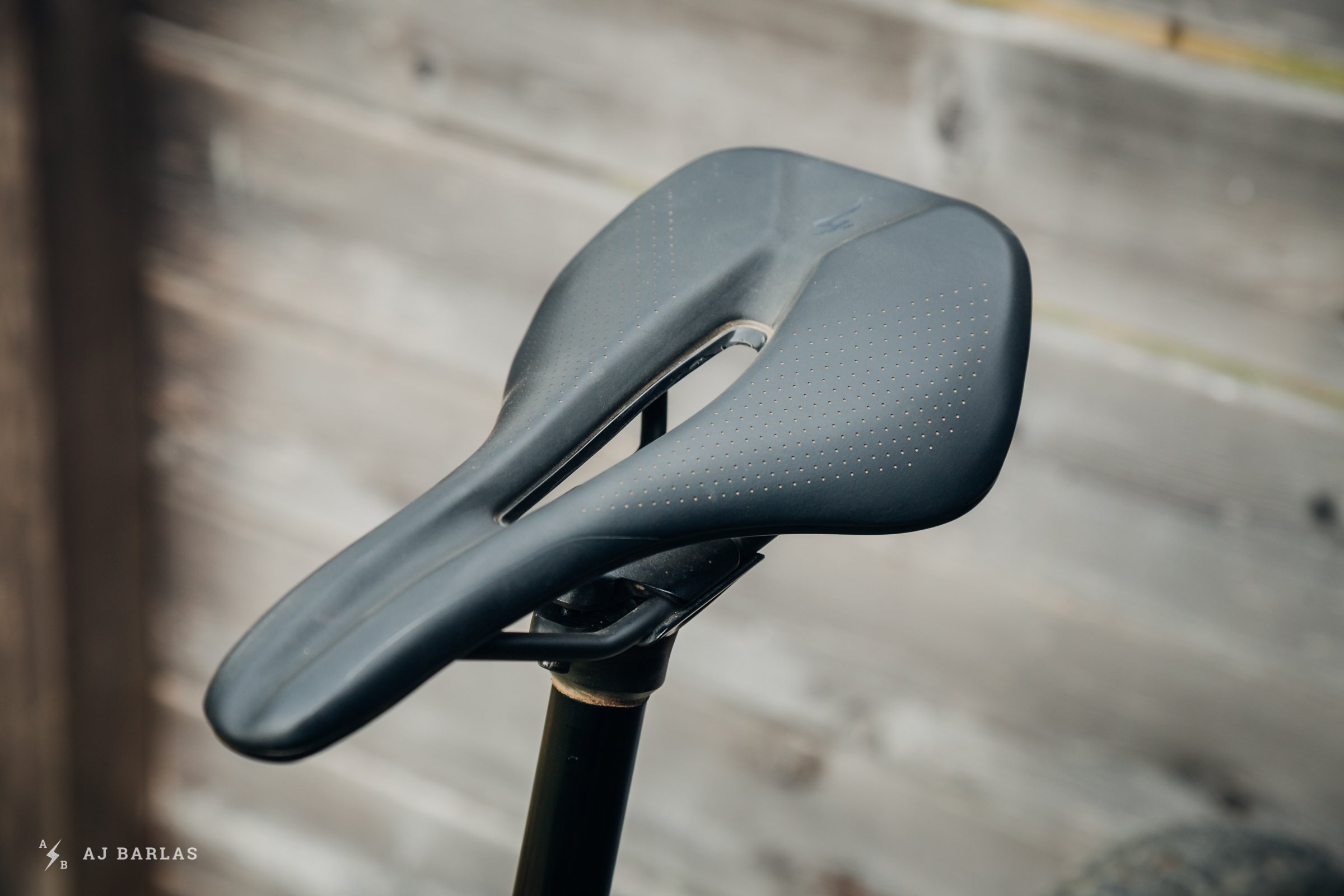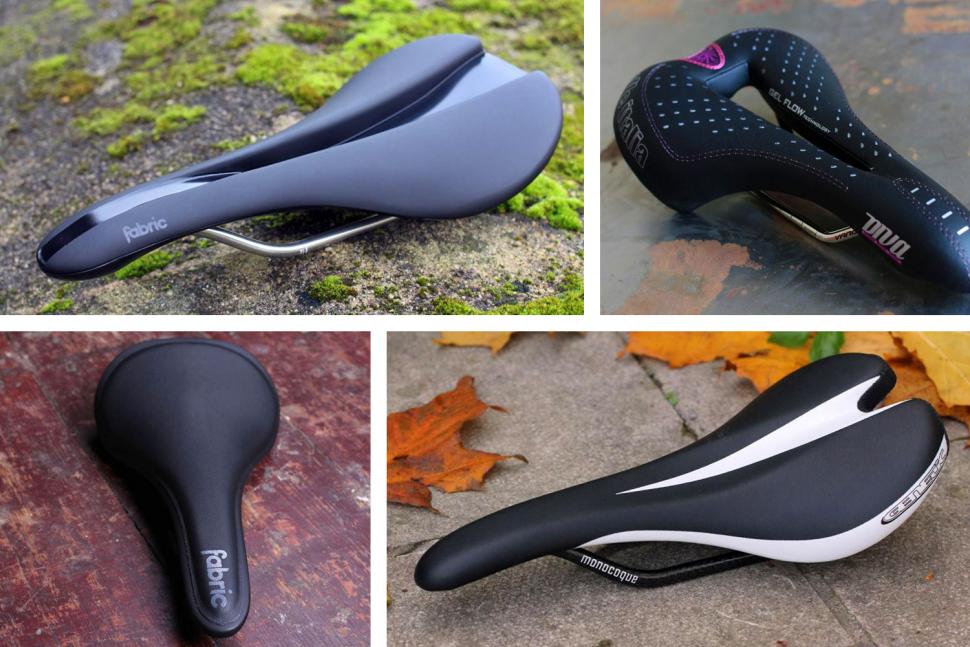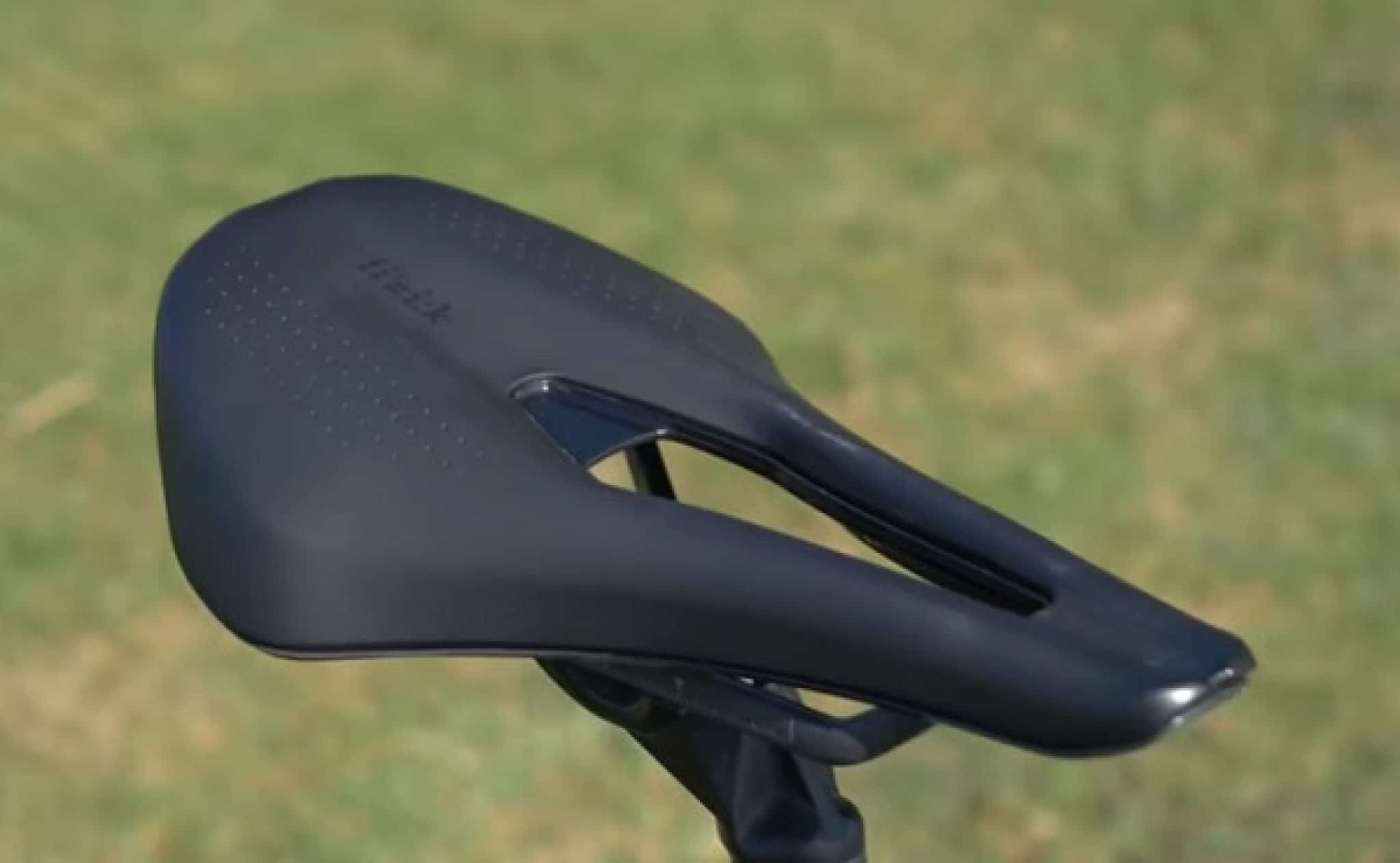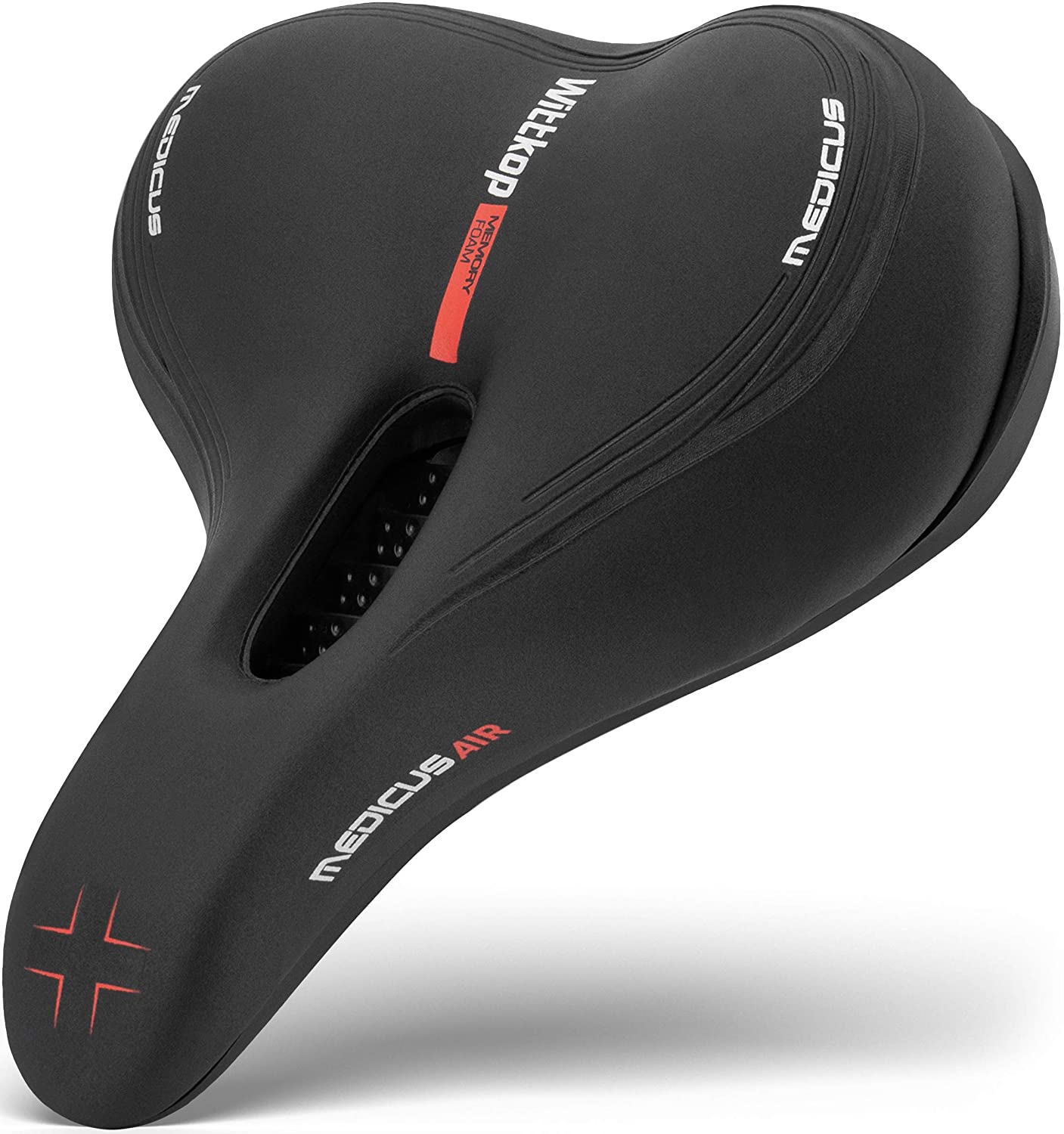Why a Comfortable Bike Saddle Matters
When it comes to cycling, a bike saddle for comfort is often overlooked, yet it plays a crucial role in a rider’s overall experience. A well-designed saddle can make all the difference in a rider’s performance, comfort, and overall enjoyment of the ride. On the other hand, a poorly designed saddle can lead to discomfort, pain, and even injury.
A comfortable bike saddle is essential for riders who log long hours in the saddle. It can help prevent common issues such as saddle sores, numbness, and pressure points. Moreover, a comfortable saddle can improve a rider’s performance by allowing them to maintain a consistent position and focus on their ride. This is particularly important for competitive riders who need to maintain a high level of performance over long distances.
In addition to the physical benefits, a comfortable bike saddle can also have a significant impact on a rider’s mental state. When a rider is comfortable, they are more likely to enjoy the ride and feel motivated to continue. This can lead to a more positive and rewarding cycling experience. On the other hand, a uncomfortable saddle can lead to frustration, demotivation, and even a decrease in riding frequency.
In conclusion, a bike saddle for comfort is not just a luxury, it’s a necessity for any serious cyclist. By investing in a comfortable saddle, riders can improve their performance, prevent injuries, and enhance their overall riding experience.
Understanding Your Riding Style: Finding the Right Saddle for You
Different riding styles require specific saddle features to ensure a comfortable and efficient ride. Whether you’re a road warrior, a mountain trailblazer, or a daily commuter, understanding your riding style is crucial in finding the right bike saddle for comfort.
Road riders, for instance, typically require a narrower saddle with a more pronounced nose to accommodate their aggressive riding position. This design allows for better aerodynamics and improved power transfer. On the other hand, mountain bikers need a saddle with a wider platform and more cushioning to absorb the shock and vibrations of rough terrain.
Commuter riders, who often ride in an upright position, benefit from a saddle with a more upright nose and a wider platform to provide additional support and comfort. Additionally, features such as a cutout or recessed area can help reduce pressure points and discomfort.
To determine your riding style, consider the type of riding you do most frequently, your riding position, and the terrain you typically encounter. You can also experiment with different saddle types and features to find what works best for you. Many bike shops and online retailers offer demo programs or trial periods, allowing you to test ride different saddles before making a purchase.
By understanding your riding style and the specific features that cater to it, you can find a bike saddle for comfort that meets your unique needs and preferences. This, in turn, can improve your overall riding experience, increase your comfort, and enhance your performance.
How to Choose a Bike Saddle for Comfort
Selecting a bike saddle for comfort can be a daunting task, especially with the numerous options available in the market. However, by considering a few key factors, you can find a saddle that provides the comfort and support you need for a enjoyable ride.
Step 1: Determine Your Saddle Shape
The shape of the saddle is a critical factor in determining comfort. There are three main saddle shapes: flat, curved, and cutaway. Flat saddles are ideal for riders who maintain a more upright position, while curved saddles are better suited for riders who lean forward. Cutaway saddles, on the other hand, feature a recessed area to reduce pressure points.
Step 2: Choose the Right Material
The material of the saddle can greatly impact comfort. Leather saddles, for instance, are known for their durability and comfort, while synthetic materials offer a more affordable option. Some saddles also feature a combination of materials, such as a leather top with a synthetic base.
Step 3: Consider the Cutout Design
A cutout design can greatly reduce pressure points and discomfort. There are different types of cutout designs, including a central cutout, a recessed area, or a hole in the middle of the saddle. The type of cutout design you choose will depend on your personal preference and riding style.
Step 4: Think About the Padding and Cover Material
The padding and cover material of the saddle can also impact comfort. Look for saddles with thick, high-density padding and a breathable cover material to keep you cool and dry during your ride.
Step 5: Check the Saddle Width and Length
The width and length of the saddle are crucial in determining comfort. A saddle that is too narrow or too short can cause discomfort and pressure points, while a saddle that is too wide or too long can cause chafing and irritation.
By following these steps and considering your riding style, you can find a bike saddle for comfort that meets your unique needs and preferences. Remember, a comfortable bike saddle is essential for a enjoyable ride, so take your time and do your research to find the perfect saddle for you.
Top Comfort-Focused Bike Saddles: Reviews and Comparisons
When it comes to finding a bike saddle for comfort, there are numerous options available in the market. To help you make an informed decision, we’ve reviewed and compared some of the most popular comfort-focused bike saddles.
Brooks Cambium C17
The Brooks Cambium C17 is a popular choice among cyclists who prioritize comfort. This saddle features a vulcanized rubber top and a durable nylon base, providing a comfortable ride and excellent durability. The C17 also features a cutout design to reduce pressure points and discomfort.
Specialized Power Comp
The Specialized Power Comp is designed for riders who want a comfortable saddle without sacrificing performance. This saddle features a stiff and lightweight design, making it ideal for road and mountain riders. The Power Comp also features a Body Geometry design, which reduces pressure points and discomfort.
The Fizik Arione VS is a popular choice among road riders who want a comfortable saddle. This saddle features a sleek and aerodynamic design, making it ideal for riders who want to reduce air resistance. The Arione VS also features a central cutout to reduce pressure points and discomfort.
Selle Italia SLR Flow
The Selle Italia SLR Flow is a popular choice among riders who want a comfortable saddle with a focus on performance. This saddle features a lightweight and stiff design, making it ideal for road and mountain riders. The SLR Flow also features a cutout design to reduce pressure points and discomfort.
When choosing a bike saddle for comfort, it’s essential to consider your riding style, saddle shape, material, and cutout design. By reviewing and comparing popular comfort-focused bike saddles, you can find the perfect saddle for your unique needs and preferences.
The Role of Saddle Width and Cutout Design in Comfort
When it comes to finding a bike saddle for comfort, two crucial factors to consider are saddle width and cutout design. These features play a significant role in providing comfort and reducing pressure points, making them essential for a enjoyable ride.
Saddle Width: Finding the Perfect Fit
The width of the saddle is critical in determining comfort. A saddle that is too narrow can cause pressure points and discomfort, while a saddle that is too wide can cause chafing and irritation. The ideal saddle width depends on the rider’s sit bone width, which can be measured using a sit bone width calculator or by visiting a local bike shop. A saddle that is tailored to the rider’s sit bone width can provide optimal comfort and support.
Cutout Design: Reducing Pressure Points
The cutout design of the saddle is another crucial factor in providing comfort. A cutout design features a recessed area in the saddle to reduce pressure points and discomfort. This design can be particularly beneficial for riders who experience pressure points or discomfort in the perineal area. Research has shown that a cutout design can reduce pressure points by up to 50%, making it an essential feature for riders who prioritize comfort.
Expert Opinions and Research Findings
According to Dr. Andy Pruitt, a renowned cycling expert, “A bike saddle for comfort should be tailored to the rider’s individual needs and preferences. Saddle width and cutout design are critical factors in providing comfort and reducing pressure points.” A study published in the Journal of Cycling Research found that a cutout design can reduce pressure points and discomfort by up to 70%, making it an essential feature for riders who prioritize comfort.
In conclusion, saddle width and cutout design are critical factors in providing comfort and reducing pressure points. By considering these features, riders can find a bike saddle for comfort that meets their unique needs and preferences, ensuring a enjoyable and comfortable ride.
Additional Comfort Features to Consider: Padding, Cover Material, and More
When searching for a bike saddle for comfort, there are several additional features to consider beyond saddle width and cutout design. These features can make a significant difference in providing comfort and reducing pressure points, ensuring a enjoyable ride.
Padding: The Right Amount of Cushioning
The padding of a bike saddle is critical in providing comfort. A saddle with too little padding can cause pressure points and discomfort, while a saddle with too much padding can cause chafing and irritation. Look for a saddle with a padding that is tailored to your riding style and preferences.
Cover Material: Breathability and Durability
The cover material of a bike saddle is another important feature to consider. A breathable cover material, such as mesh or perforated leather, can help keep you cool and dry during long rides. A durable cover material, such as high-quality leather or synthetic materials, can withstand the rigors of regular use.
Ergonomic Design: Supporting Your Body
An ergonomic design is essential in providing comfort and reducing pressure points. Look for a saddle with an ergonomic design that supports your body, including features such as a recessed area for the perineal area and a curved shape to support your sit bones.
Other Comfort Features to Consider
In addition to padding, cover material, and ergonomic design, there are several other comfort features to consider when searching for a bike saddle for comfort. These include features such as a noseless design, which can reduce pressure points and discomfort, and a adjustable design, which can be tailored to your unique needs and preferences.
By considering these additional comfort features, you can find a bike saddle for comfort that meets your unique needs and preferences, ensuring a enjoyable and comfortable ride.
Breaking In Your New Saddle: Tips for a Smooth Transition
Once you’ve found the perfect bike saddle for comfort, it’s essential to break it in properly to ensure a smooth transition. A well-broken-in saddle can make a significant difference in providing comfort and reducing pressure points, ensuring a enjoyable ride.
Gradual Wear: A Key to Success
To break in your new saddle, start by wearing it for short periods, gradually increasing the duration over time. This allows your body to adjust to the new saddle, reducing the risk of discomfort and pressure points.
Saddle Adjustment: Finding the Perfect Position
Proper saddle adjustment is critical in ensuring a comfortable ride. Experiment with different saddle positions to find the perfect fit, taking into account factors such as saddle height, tilt, and fore-aft position.
Riding Technique: Developing Good Habits
Good riding technique can also play a significant role in breaking in your new saddle. Focus on maintaining a relaxed riding position, with your weight evenly distributed on the saddle and handlebars. Avoid putting too much pressure on the saddle, as this can cause discomfort and pressure points.
Additional Tips for a Smooth Transition
In addition to gradual wear, saddle adjustment, and riding technique, there are several other tips to consider when breaking in your new saddle. These include wearing cycling shorts or padded underwear to reduce pressure points, applying chamois cream to reduce friction, and taking regular breaks to stretch and move around.
By following these tips, you can ensure a smooth transition to your new bike saddle for comfort, providing a comfortable and enjoyable ride.
Conclusion: Finding Your Perfect Seat for a Comfortable Ride
In conclusion, a comfortable bike saddle is essential for a enjoyable and pain-free ride. By understanding the importance of a comfortable bike saddle, determining your riding style, and considering factors such as saddle shape, material, and cutout design, you can find the perfect bike saddle for comfort.
Remember to also consider additional comfort features such as padding, cover material, and ergonomic design, and to break in your new saddle gradually to ensure a smooth transition. By following these tips and guidelines, you can find your perfect seat and enjoy a comfortable ride, whether you’re a casual commuter or an avid cyclist.
A bike saddle for comfort is not just a luxury, but a necessity for any serious cyclist. By investing in a high-quality bike saddle, you can improve your performance, prevent injuries, and enhance your overall riding experience. So why wait? Find your perfect seat today and start enjoying the ride!








